Home>Home Appliances>Kitchen Appliances>How To Make Pork Jerky With A Dehydrator
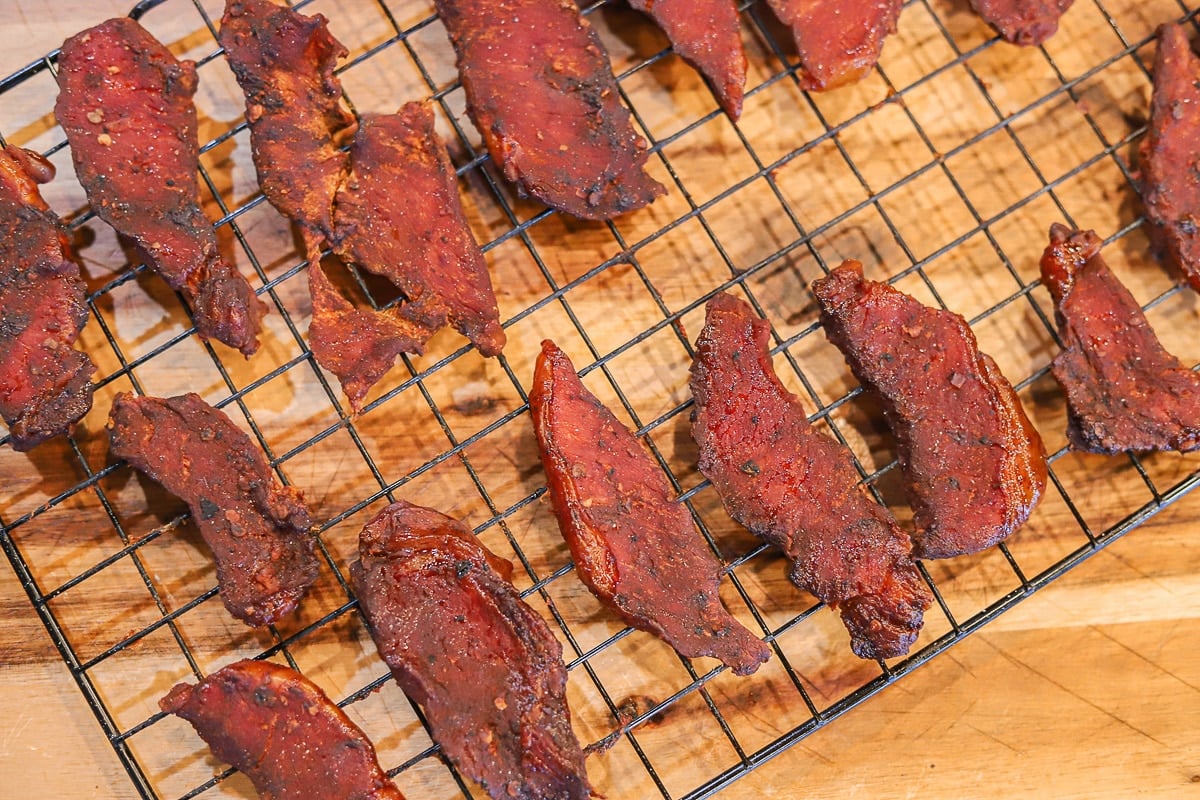

Kitchen Appliances
How To Make Pork Jerky With A Dehydrator
Published: January 7, 2024
Learn how to make delicious pork jerky using a dehydrator in your kitchen. Discover the best techniques for creating flavorful jerky with kitchen appliances.
(Many of the links in this article redirect to a specific reviewed product. Your purchase of these products through affiliate links helps to generate commission for Storables.com, at no extra cost. Learn more)
Introduction
Welcome to the world of homemade pork jerky! If you're a fan of savory, protein-packed snacks, then you're in for a treat. Making pork jerky with a dehydrator is not only a fun and rewarding culinary adventure, but it also allows you to customize the flavor profiles to suit your taste preferences. Whether you're a seasoned jerky enthusiast or a curious kitchen explorer, this guide will walk you through the step-by-step process of creating delicious pork jerky using a dehydrator.
Pork jerky is a popular snack known for its rich, meaty flavor and chewy texture. It's a convenient, on-the-go option for hikers, campers, or anyone looking for a satisfying protein boost. By crafting your own pork jerky, you can ensure that it's free from artificial additives and preservatives, making it a healthier alternative to store-bought options.
In this guide, we'll cover everything from selecting the perfect cut of pork to marinating the meat with mouthwatering flavors. We'll also delve into the process of dehydrating the pork to achieve that perfect jerky consistency. Additionally, we'll explore the best practices for storing your pork jerky to maintain its freshness and flavor over time.
Whether you're a culinary enthusiast looking to expand your homemade snack repertoire or simply someone who appreciates the satisfaction of creating delicious treats from scratch, making pork jerky with a dehydrator is a fantastic endeavor. So, roll up your sleeves, sharpen your chef's knife, and get ready to embark on a flavorful journey into the world of pork jerky creation!
Key Takeaways:
- Homemade pork jerky is a delicious and customizable snack made with a dehydrator. It’s a healthier alternative to store-bought options, and the marinating process infuses the meat with irresistible flavors.
- Properly storing and enjoying homemade pork jerky ensures its freshness and flavor. Whether enjoyed on its own or used in culinary creations, the versatility of pork jerky makes it a delightful addition to your snacking repertoire.
Read more: How To Make Deer Jerky In A Dehydrator
Choosing the Right Cut of Pork
When it comes to making pork jerky, selecting the right cut of meat is crucial for achieving the perfect balance of flavor and texture. While pork jerky can be made from various cuts, certain options are particularly well-suited for this delectable snack.
One of the most popular choices for pork jerky is pork loin. This cut is relatively lean and boasts a tender texture, making it ideal for creating chewy yet succulent jerky. Additionally, pork loin is readily available at most grocery stores and can be easily prepared for jerky-making.
Another excellent option is pork tenderloin, a lean and tender cut that lends itself well to jerky production. Its relatively low fat content makes it a healthier choice, and its natural tenderness ensures that the jerky will have an appealing chew without being overly tough.
For those who prefer a slightly fattier and more flavorful jerky, pork shoulder or butt can be excellent choices. These cuts contain more marbling, which can contribute to a richer taste and juicier texture in the finished jerky. However, it’s important to trim excess fat from these cuts before slicing the meat, as excessive fat can hinder the dehydration process and lead to spoilage.
Regardless of the specific cut you choose, it’s essential to look for meat with minimal connective tissue and visible fat. While some marbling can enhance the flavor and texture of the jerky, large pockets of fat or tough sinew can detract from the overall quality of the finished product.
Before purchasing your pork, consider speaking with a knowledgeable butcher who can provide guidance on selecting the best cut for jerky-making. Additionally, if you’re comfortable with basic meat preparation, you can trim the pork yourself to ensure that it meets your specifications.
By choosing the right cut of pork, you’ll set the stage for a delicious and satisfying jerky-making experience. With the perfect meat in hand, you’re ready to move on to the next steps in the process: preparing the pork and crafting a mouthwatering marinade.
Preparing the Pork
Before you can transform your chosen cut of pork into delectable jerky, it’s essential to properly prepare the meat for the marinating and dehydrating process. This involves a few key steps to ensure that the pork is primed for absorbing the flavors of the marinade and achieving the ideal texture for jerky.
The first step in preparing the pork is to ensure that it is thoroughly chilled. Place the pork in the freezer for approximately 1-2 hours to firm it up without freezing it solid. This makes it easier to slice the meat into thin, uniform strips, a crucial element in achieving consistent drying and flavor distribution during the dehydration process.
Once the pork has firmed up, remove it from the freezer and carefully slice it against the grain into strips approximately 1/8 to 1/4 inch thick. Slicing against the grain helps break down the muscle fibers, resulting in a more tender and chewy jerky. If you have a meat slicer, this can be a convenient tool for achieving consistently thin slices.
After slicing the pork, it’s important to trim any excess fat from the strips. While some marbling can enhance the flavor and texture of the jerky, large pieces of fat can become rancid during the dehydration process and lead to spoilage. Removing visible fat helps prolong the shelf life of the jerky and ensures a more consistent texture.
Once the pork is sliced and trimmed, it’s time to proceed with the marinating process. However, if you’re not quite ready to begin marinating, the prepared pork can be refrigerated in an airtight container for up to 24 hours. This allows for convenient meal preparation, as you can slice and trim the pork in advance and then proceed with marinating at a later time.
By taking the time to properly prepare the pork, you’re setting the stage for a successful jerky-making venture. From precise slicing to careful fat trimming, each step plays a crucial role in ensuring that your homemade pork jerky achieves the perfect balance of flavor and texture. With the pork ready for marinating, it’s time to delve into the art of crafting a tantalizing marinade that will infuse the meat with irresistible taste.
Making the Marinade
The marinade is the heart and soul of pork jerky, infusing the meat with a symphony of flavors that will tantalize your taste buds with every bite. Crafting a well-balanced and flavorful marinade is an art form that allows for creativity and personalization, as you can tailor the ingredients to suit your preferred taste profile.
One of the key components of a pork jerky marinade is a balance of savory and umami flavors. Soy sauce serves as the foundation of many pork jerky marinades, providing a rich, salty base that enhances the natural savoriness of the meat. Additionally, ingredients such as Worcestershire sauce and fish sauce can contribute depth and complexity to the marinade, elevating its overall flavor profile.
To complement the savory notes, sweet elements such as brown sugar, honey, or maple syrup can be incorporated to add a hint of sweetness to the marinade. This not only balances the saltiness of the soy sauce but also caramelizes during the dehydration process, creating a delightful glaze on the finished jerky.
For a touch of acidity and brightness, consider adding citrus juice, such as freshly squeezed orange or lime juice, to the marinade. The acidity helps tenderize the meat and adds a refreshing zing to the overall flavor profile. Additionally, a splash of vinegar, such as apple cider or rice vinegar, can further enhance the marinade’s complexity.
To infuse the pork with aromatic depth, consider incorporating spices and seasonings such as garlic powder, onion powder, black pepper, and smoked paprika. These ingredients contribute layers of flavor and aroma, elevating the marinade to create a multidimensional taste experience.
For those who enjoy a bit of heat, adding a pinch of cayenne pepper, red pepper flakes, or a dash of hot sauce can provide a subtle kick to the marinade, adding a tantalizing element of spice to the finished jerky.
As you craft your marinade, consider experimenting with different flavor combinations to discover your perfect blend. Whether you prefer a classic teriyaki-inspired marinade, a bold and smoky barbecue-infused flavor, or a zesty citrus and herb profile, the marinade serves as a canvas for your culinary creativity.
Once you’ve assembled your chosen ingredients, simply combine them in a bowl and whisk until well blended. Taste the marinade and adjust the seasoning to your preference, ensuring that it strikes the perfect balance of savory, sweet, tangy, and aromatic notes.
With a tantalizing marinade at the ready, it’s time to move on to the next step: marinating the pork to infuse it with irresistible flavor before dehydration.
Marinate the pork slices in a mixture of soy sauce, Worcestershire sauce, and spices for at least 4 hours before dehydrating to enhance flavor.
Marinating the Pork
With the tantalizing marinade prepared, it’s time to immerse the pork in a flavorful bath that will transform it into delectable jerky. The marinating process is a crucial step in infusing the meat with the perfect balance of savory, sweet, and aromatic flavors, ensuring that each bite of jerky is a symphony of taste sensations.
To begin, place the sliced pork strips in a shallow dish or a resealable plastic bag, creating a single layer to allow the marinade to evenly coat each piece. Pour the prepared marinade over the pork, ensuring that the meat is fully submerged and coated in the flavorful mixture. If using a resealable bag, gently massage the marinade into the meat to ensure even distribution.
Once the pork is thoroughly coated, cover the dish or seal the bag, and refrigerate it for at least 6-24 hours. This extended marinating time allows the meat to absorb the complex flavors of the marinade, resulting in a rich and well-seasoned jerky. For optimal flavor infusion, consider turning the pork strips occasionally to ensure that each piece is evenly marinated.
During the marinating process, the pork undergoes a transformation as it absorbs the savory, sweet, and aromatic elements of the marinade. The flavors meld and permeate the meat, creating a tantalizing blend that will shine through in every bite of the finished jerky.
As the pork marinates, the natural enzymes in the marinade work to tenderize the meat, resulting in a more succulent and flavorful jerky. Additionally, the sugars in the marinade caramelize during the dehydration process, creating a delightful glaze on the finished jerky and adding an extra layer of complexity to its flavor profile.
After the marinating time has elapsed, the pork is ready to undergo the final step in the jerky-making process: dehydration. The marinated meat is now infused with a symphony of flavors and is primed to undergo the drying process that will transform it into mouthwatering pork jerky.
With the pork thoroughly marinated and brimming with flavor, it’s time to move on to the exciting process of dehydrating the meat to achieve the perfect jerky consistency.
Read more: How To Make Bacon Jerky In A Dehydrator
Dehydrating the Pork
Dehydrating the marinated pork is the transformative step that turns flavorful strips of meat into delicious, chewy pork jerky. This process involves removing the moisture from the meat to create a shelf-stable snack with concentrated flavors and a satisfyingly chewy texture.
To begin the dehydration process, arrange the marinated pork strips in a single layer on the dehydrator trays, ensuring that there is space between each piece to allow for adequate air circulation. If your dehydrator has an adjustable temperature setting, preheat it to approximately 160°F (70°C) to facilitate efficient drying while preserving the meat’s quality.
Once the pork strips are arranged on the trays, place them in the dehydrator and set the timer according to the manufacturer’s guidelines. The drying time can vary depending on factors such as the thickness of the meat, the humidity in the environment, and the specific dehydrator model being used.
Throughout the dehydration process, periodically check the pork for doneness. The jerky is ready when it is firm and dry to the touch, with a pliable yet slightly leathery texture. To ensure that the jerky is thoroughly dehydrated, perform a visual inspection and look for any remaining moisture or signs of underdone meat.
Once the pork jerky has reached the desired consistency, remove it from the dehydrator and allow it to cool completely. During this cooling period, the jerky will firm up further, and its flavors will continue to develop, resulting in a satisfyingly chewy texture and a rich, concentrated taste.
After the jerky has cooled, it’s time to perform a final quality check. Inspect the jerky for any signs of moisture or soft spots, as these can indicate that the meat is not fully dehydrated. Properly dehydrated pork jerky should be uniformly dry and chewy, with no visible signs of moisture remaining.
Once you’ve confirmed that the jerky is thoroughly dehydrated, it’s ready to be enjoyed as a delicious, protein-packed snack. Whether you savor it on its own, pair it with your favorite dips and sauces, or incorporate it into creative recipes, your homemade pork jerky is a testament to your culinary prowess and dedication to crafting flavorful, wholesome snacks.
With the pork jerky successfully dehydrated and ready to be savored, the final step is to explore the best practices for storing and enjoying your delectable creation for the days and weeks to come.
Storing and Enjoying Your Pork Jerky
After the rewarding process of creating delectable pork jerky, it’s essential to employ proper storage methods to maintain its freshness and flavor for an extended period. By storing your homemade jerky correctly, you can ensure that it remains a convenient and satisfying snack for your enjoyment.
To store your pork jerky, begin by allowing it to cool completely after the dehydration process. Once cooled, transfer the jerky to airtight containers or resealable bags, ensuring that there is minimal air trapped inside. Properly sealed containers help prevent moisture from compromising the jerky’s texture and flavor, extending its shelf life.
When selecting storage containers, opt for those made of materials such as glass or food-grade plastic, as these help maintain the jerky’s quality and protect it from exposure to external odors. Additionally, consider portioning the jerky into smaller servings before sealing to minimize air exposure each time the container is opened.
Store the sealed containers of pork jerky in a cool, dry, and dark environment to preserve its freshness. Room temperature or slightly cooler storage spaces are ideal, as excessive warmth can accelerate spoilage, while exposure to light can degrade the jerky’s color and flavor over time.
When properly stored, homemade pork jerky can maintain its quality for several weeks, providing you with a convenient and flavorful snack to enjoy at your leisure. Whether you’re embarking on outdoor adventures, seeking a protein-packed workday pick-me-up, or simply craving a satisfying snack, your homemade jerky will be ready to meet your needs.
When it comes to savoring your pork jerky, there are numerous enjoyable ways to indulge in this flavorful treat. Whether you prefer to relish it on its own, pair it with complementary flavors, or incorporate it into culinary creations, the versatility of pork jerky makes it a delightful addition to your snacking repertoire.
For a simple yet satisfying experience, savor the pork jerky on its own, allowing its rich, savory flavor and chewy texture to take center stage. Alternatively, pair it with accompaniments such as cheese, nuts, or dried fruits to create a personalized charcuterie board that showcases a variety of flavors and textures.
For a culinary adventure, consider using pork jerky as an ingredient in recipes such as stir-fries, salads, or savory trail mix blends. Its concentrated flavor and chewy texture can elevate a wide range of dishes, adding a delightful umami richness and satisfying protein boost to your culinary creations.
By storing your pork jerky with care and savoring it in various ways, you can fully appreciate the fruits of your labor and creativity. Whether enjoyed as a standalone snack or incorporated into culinary endeavors, your homemade pork jerky is a testament to your dedication to crafting wholesome, flavorful treats.
With your pork jerky expertly stored and ready to be savored, you’ve completed the fulfilling journey of creating a delectable snack that reflects your culinary passion and commitment to wholesome, homemade delights.
Frequently Asked Questions about How To Make Pork Jerky With A Dehydrator
Was this page helpful?
At Storables.com, we guarantee accurate and reliable information. Our content, validated by Expert Board Contributors, is crafted following stringent Editorial Policies. We're committed to providing you with well-researched, expert-backed insights for all your informational needs.
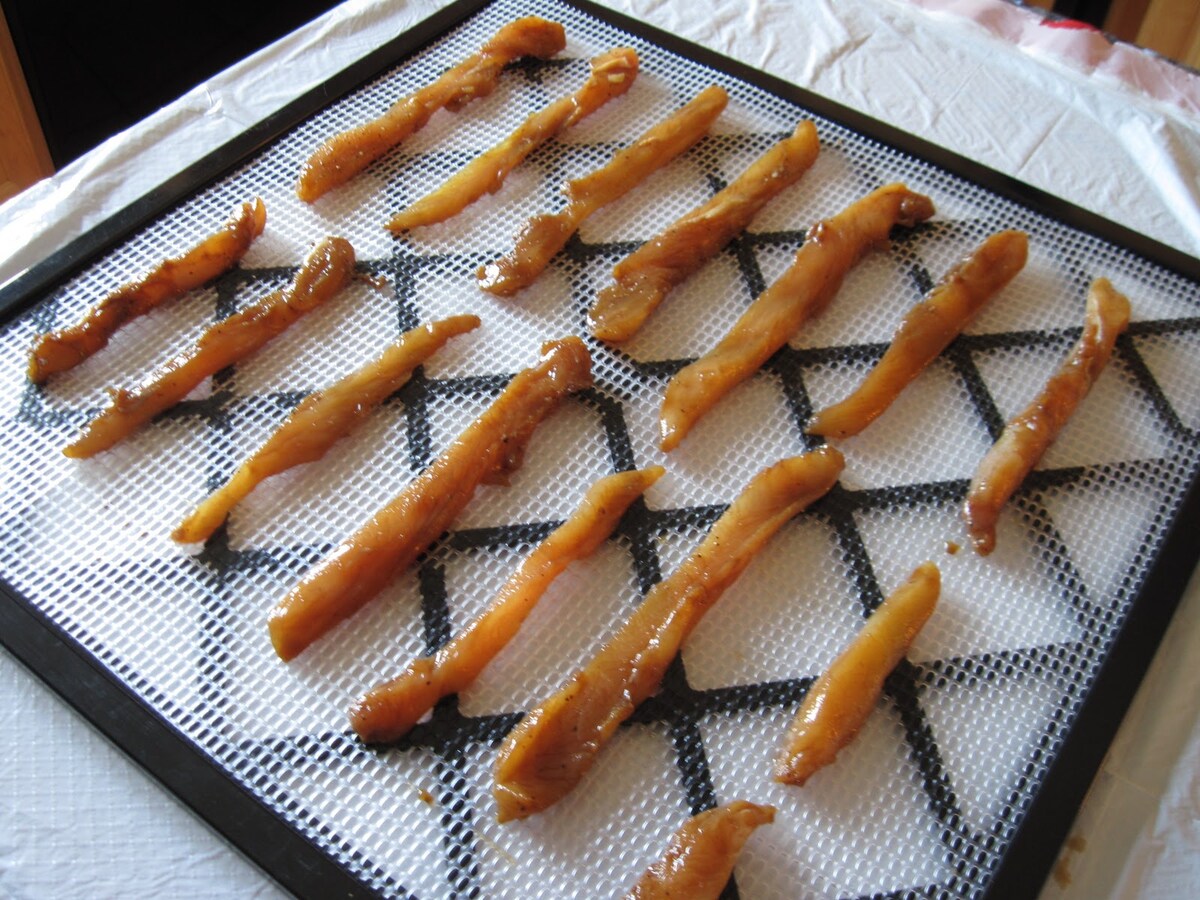
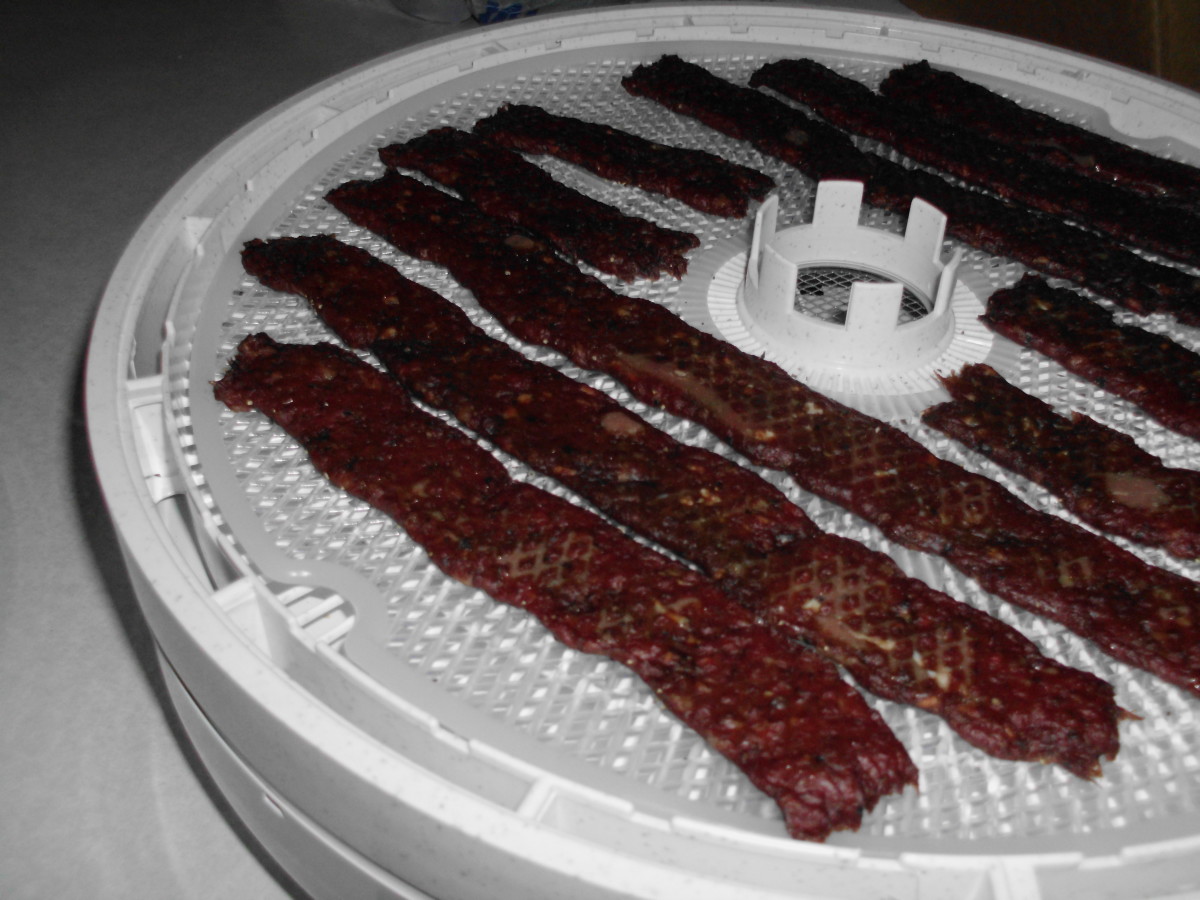
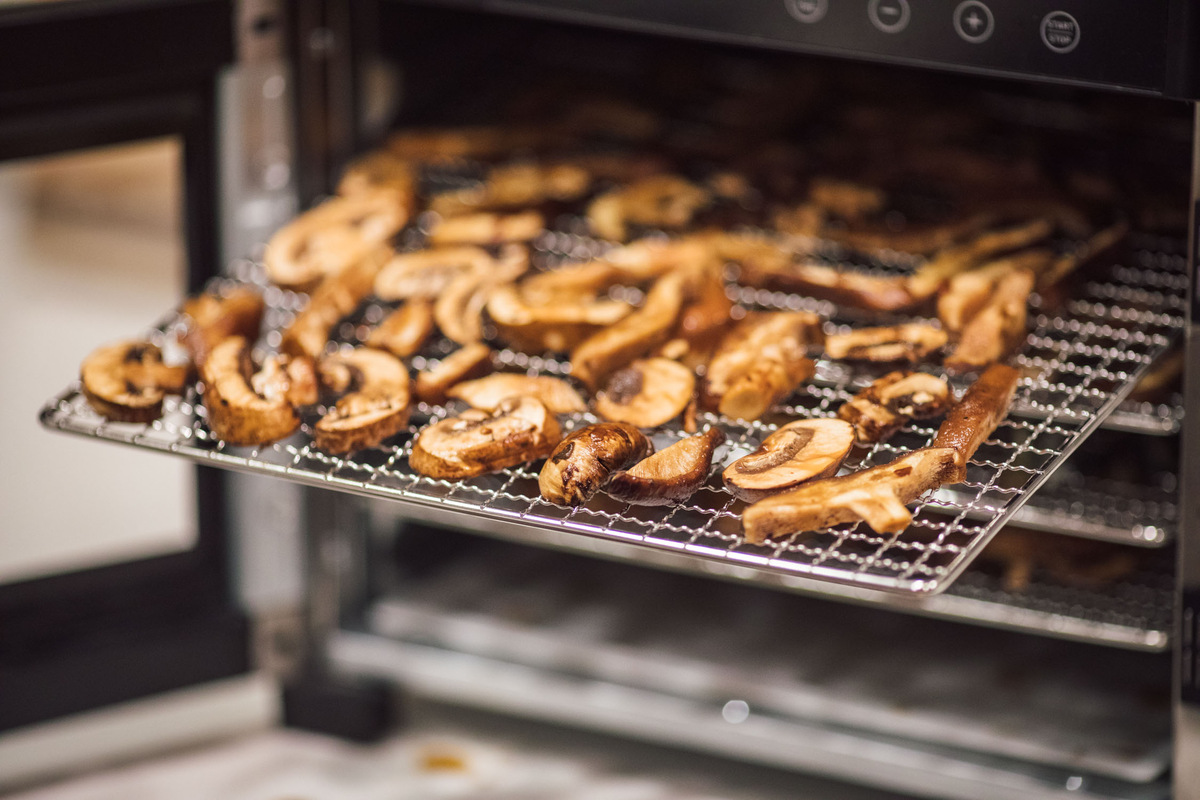
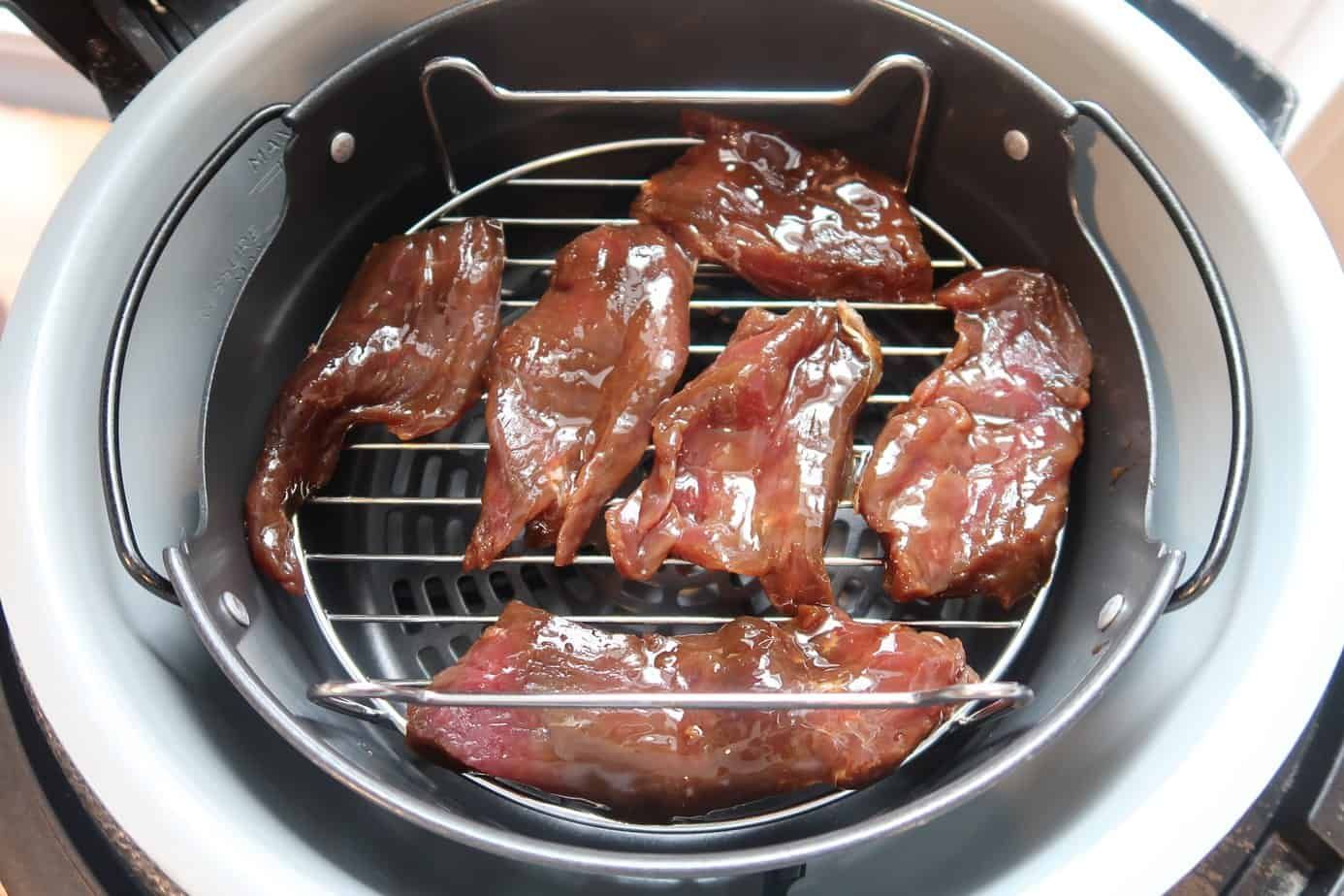
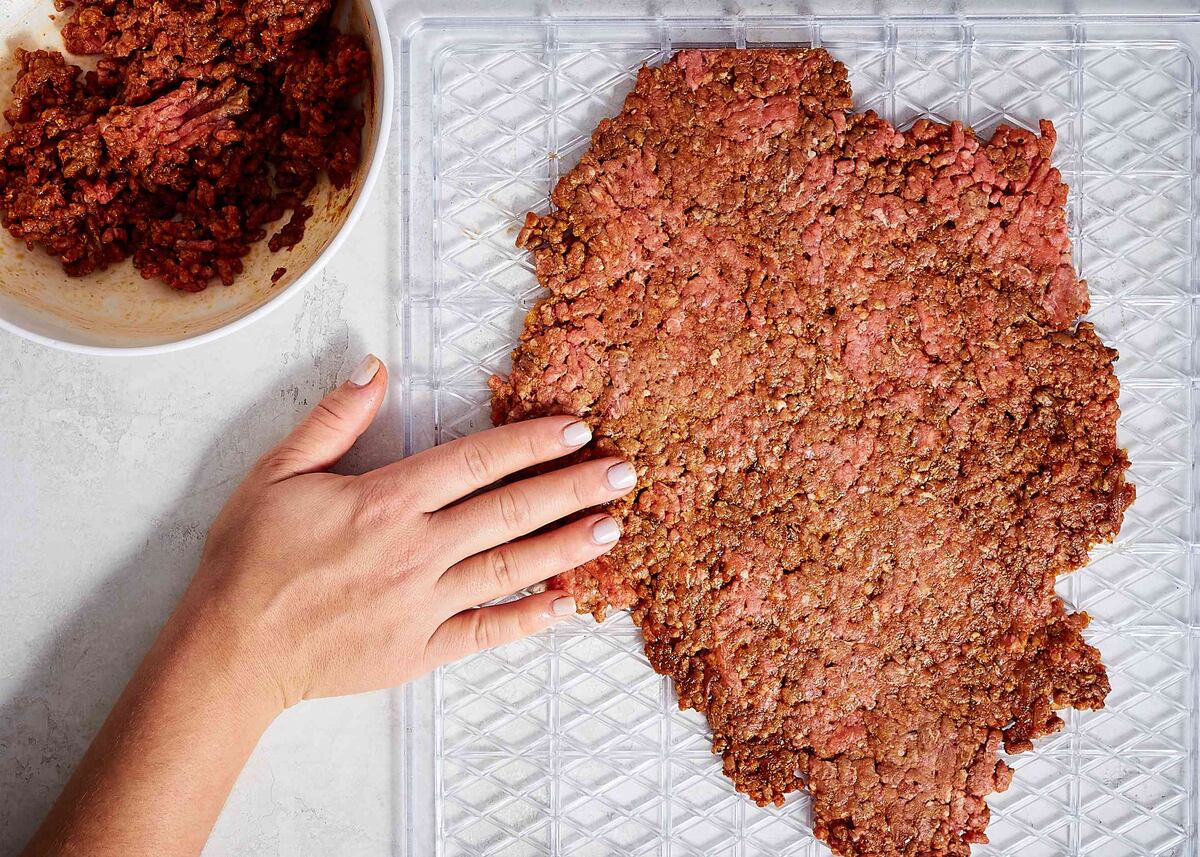
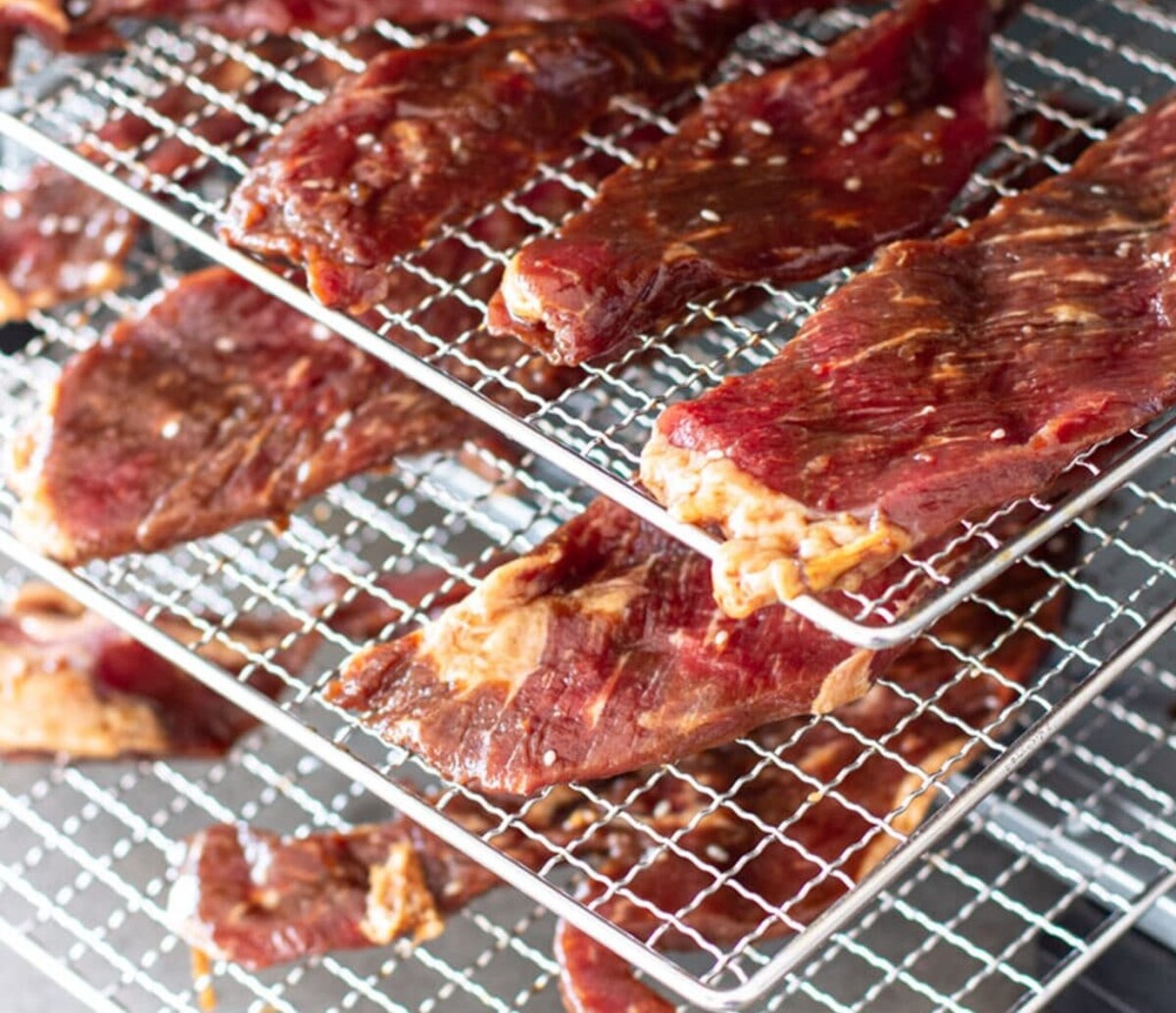
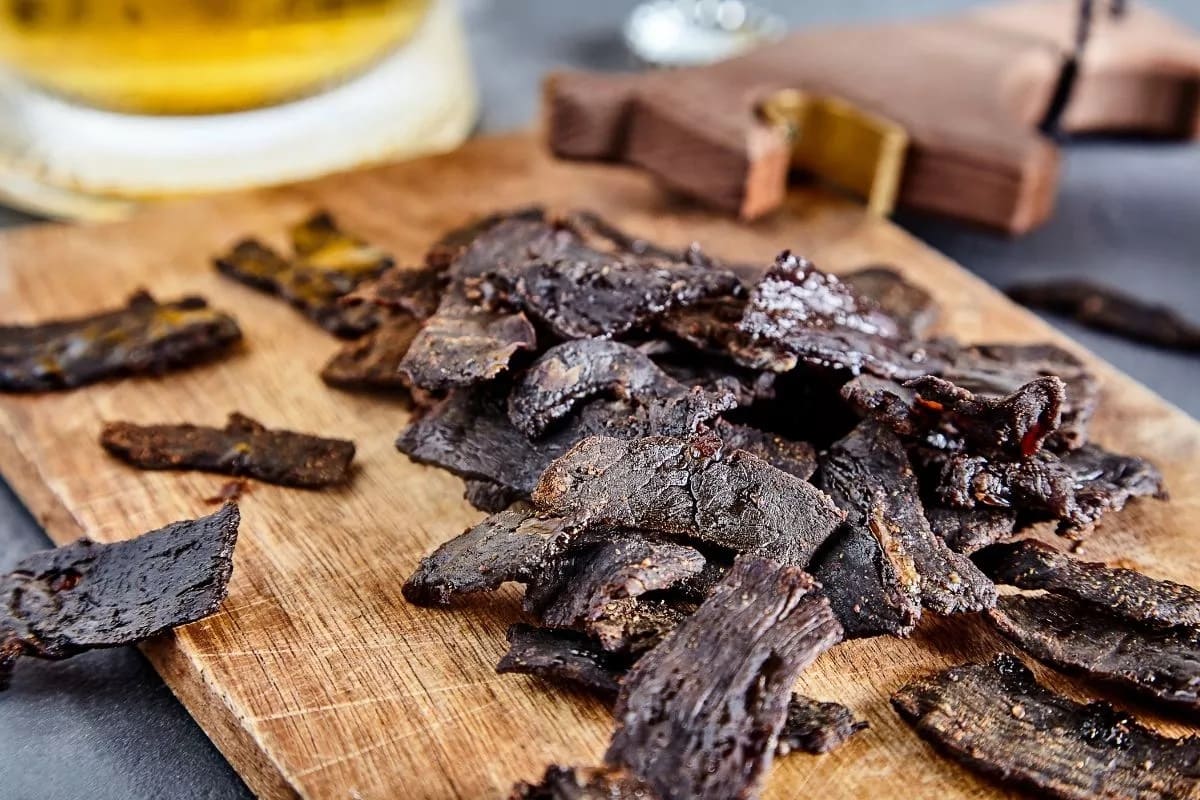
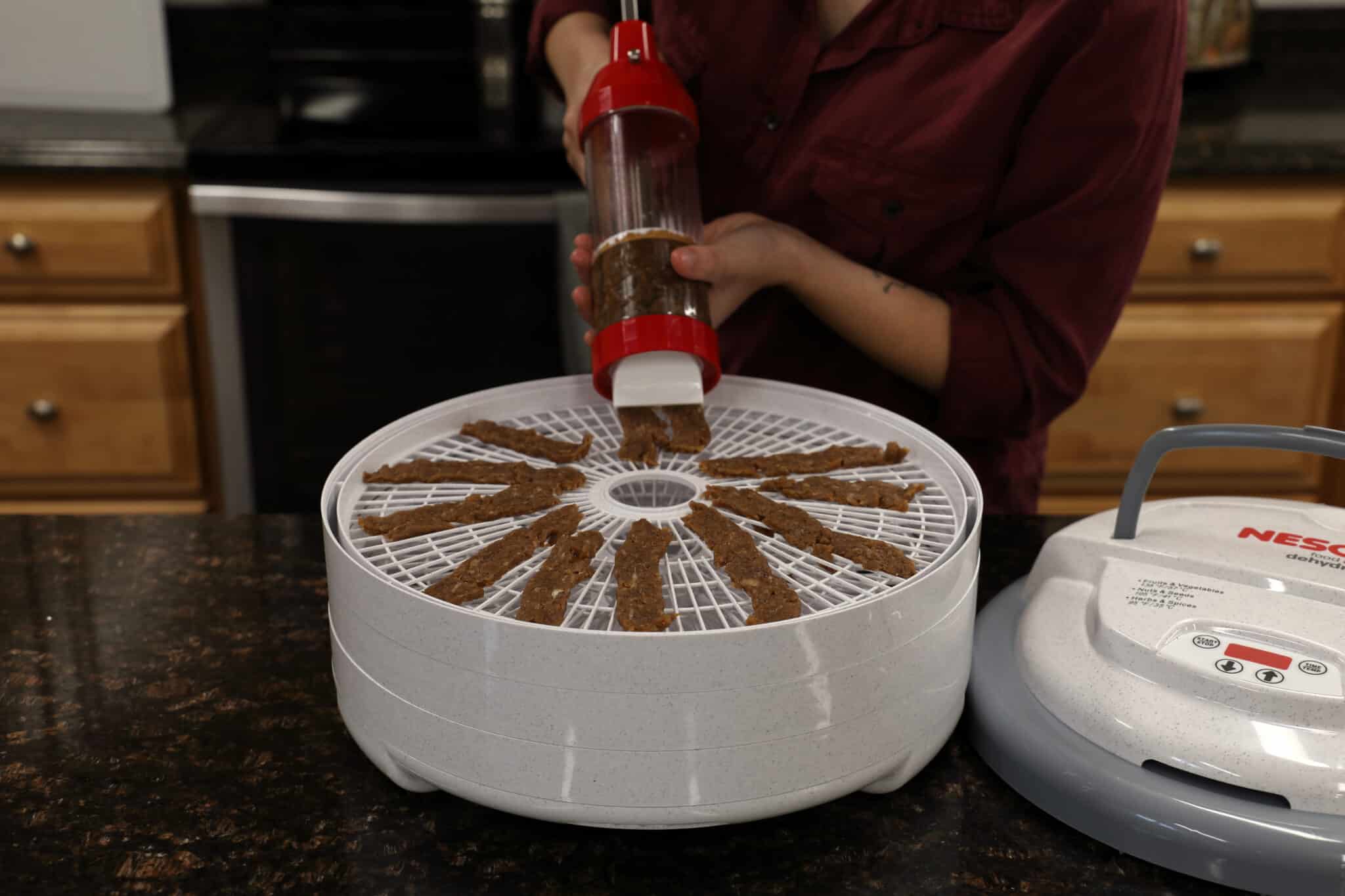
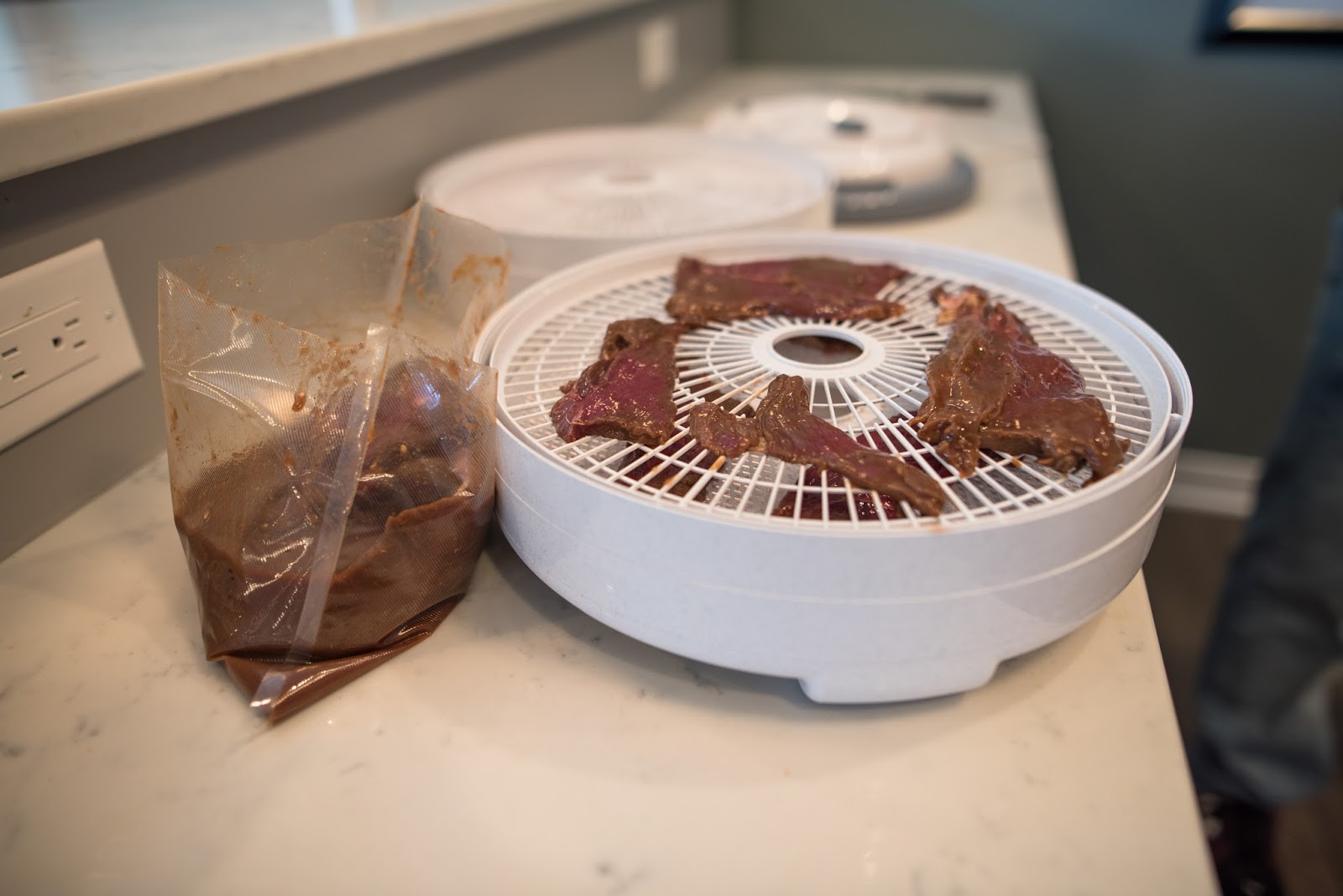
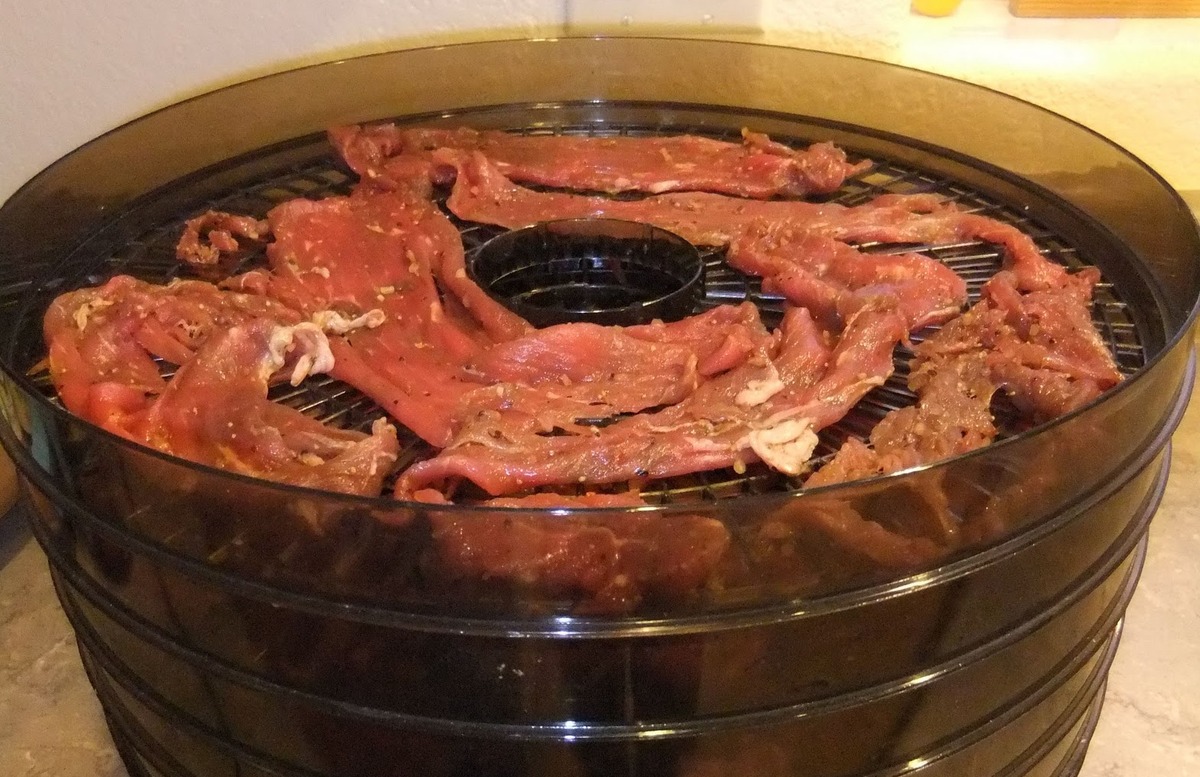
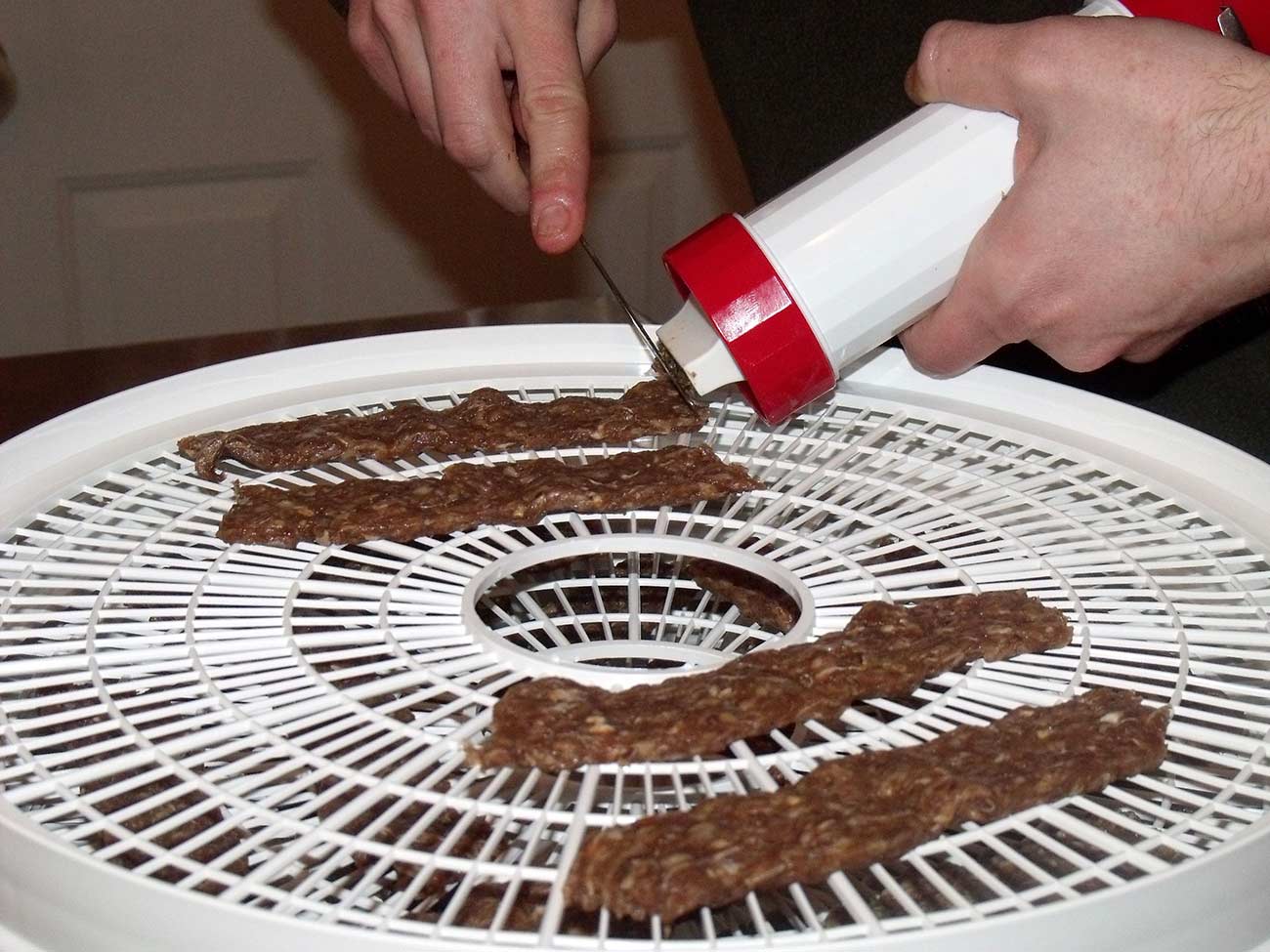
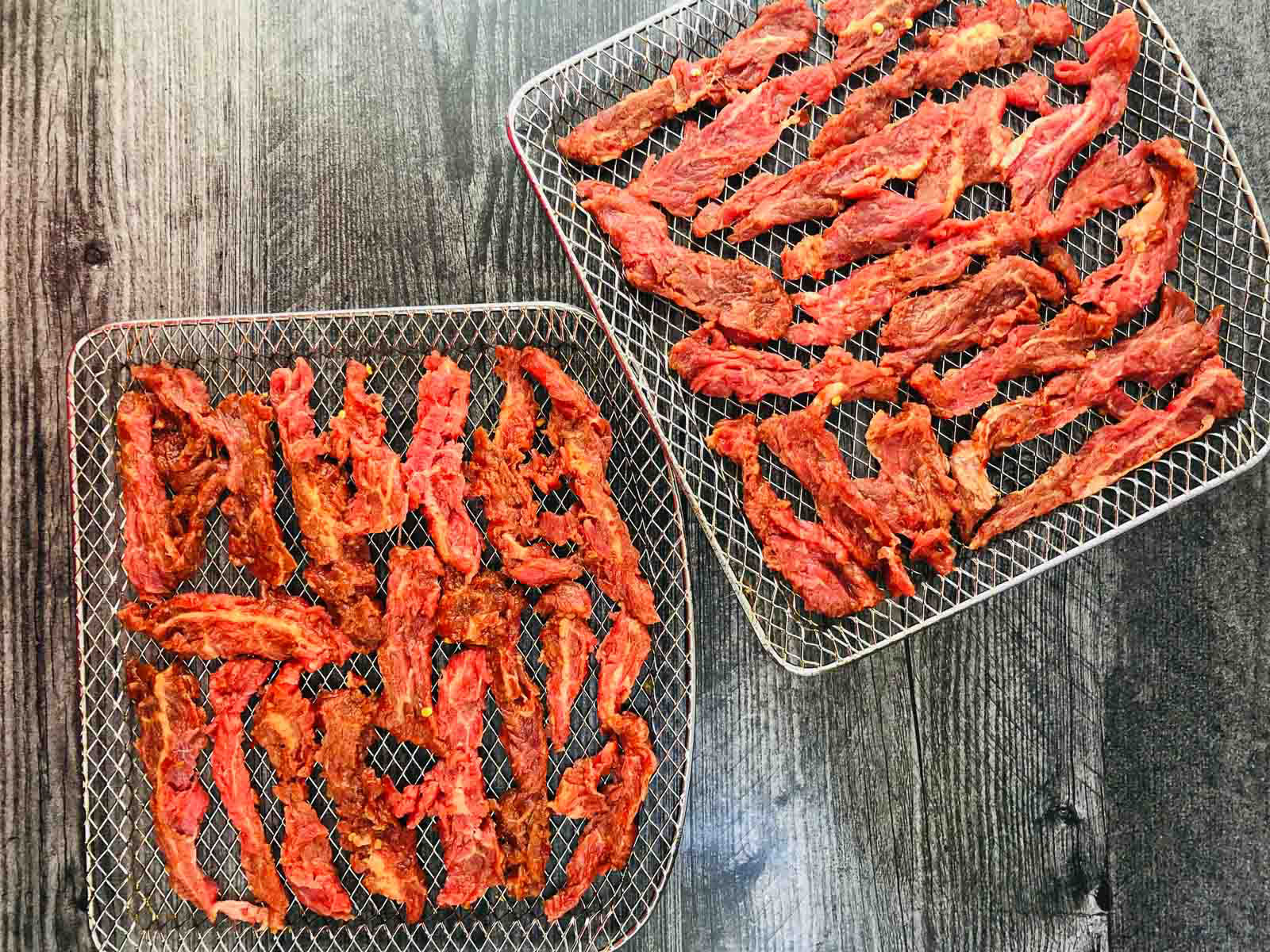

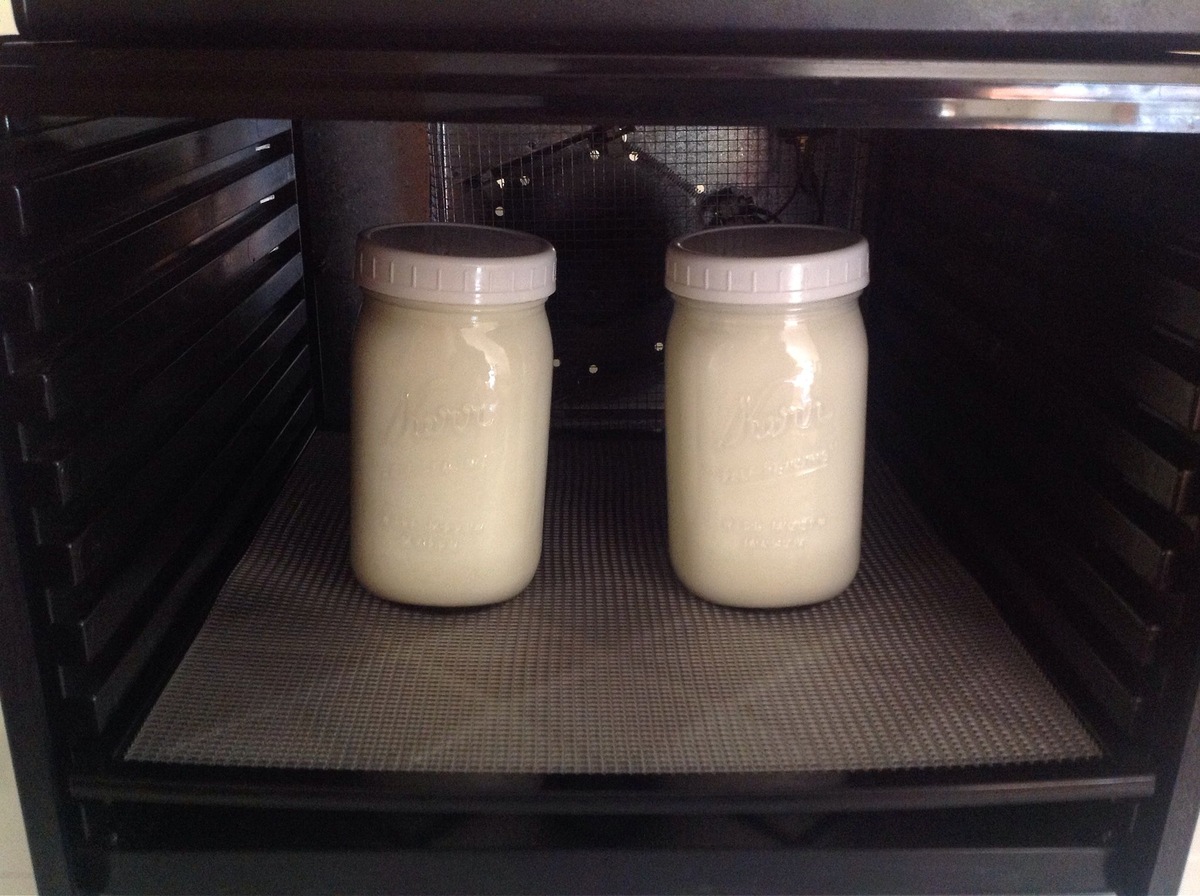

0 thoughts on “How To Make Pork Jerky With A Dehydrator”